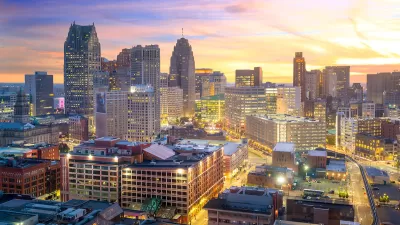Since the September 11 attacks, the areas in and surrounding Lower Manhattan have experienced an increase in the population of young, educated workers, reports Sam Roberts. Farther-off suburbs are seeing their share of such high-value workers shrink.
"After suffering through a loss of jobs and residents in the aftermath of the Sept. 11 attacks," writes Roberts, "Lower Manhattan has undergone a renaissance." According to the Census Bureau, the population within a two-mile radius of City Hall has increased by nearly 40,000 people in the past decade. A separate analysis by the Downtown Alliance found, "[t]oday, Lower Manhattan is surrounded by communities that have an increasing share of the region's high-value workers."
Lower Manhattan has grown "in part as a result of incentives, including subsidies and mass transit improvements, intended to spur a rebound after Sept. 11," notes Roberts. Within a 30–minute commute of downtown, the biggest population gains have happened in the Newport-Grove Street-Jersey City Heights area on the New Jersey waterfront and in Williamsburg and Greenpoint in Brooklyn. Many parents are choosing to raise their families closer to the city as opposed to the suburbs, citing diverse communities and shorter commutes as benefits.
The Downtown Alliance found that the number of "college-educated people between 18 and 44 living within a 30-minute commute of Lower Manhattan" increased by more than 172,000 people between 2000 and 2010. "If these growth trends continue," the Downtown Alliance analysis said, "it will not be long before the young, educated population of areas surrounding Lower Manhattan outranks that found in all of Long Island; Hudson Valley, N.Y.; and southern Connecticut combined."
FULL STORY: In and Around Lower Manhattan, Population Growth Since 9/11

Alabama: Trump Terminates Settlements for Black Communities Harmed By Raw Sewage
Trump deemed the landmark civil rights agreement “illegal DEI and environmental justice policy.”

Study: Maui’s Plan to Convert Vacation Rentals to Long-Term Housing Could Cause Nearly $1 Billion Economic Loss
The plan would reduce visitor accommodation by 25% resulting in 1,900 jobs lost.

Planetizen Federal Action Tracker
A weekly monitor of how Trump’s orders and actions are impacting planners and planning in America.

Wind Energy on the Rise Despite Federal Policy Reversal
The Trump administration is revoking federal support for renewable energy, but demand for new projects continues unabated.

Passengers Flock to Caltrain After Electrification
The new electric trains are running faster and more reliably, leading to strong ridership growth on the Bay Area rail system.

Texas Churches Rally Behind ‘Yes in God’s Back Yard’ Legislation
Religious leaders want the state to reduce zoning regulations to streamline leasing church-owned land to housing developers.
Urban Design for Planners 1: Software Tools
This six-course series explores essential urban design concepts using open source software and equips planners with the tools they need to participate fully in the urban design process.
Planning for Universal Design
Learn the tools for implementing Universal Design in planning regulations.
Caltrans
Smith Gee Studio
Institute for Housing and Urban Development Studies (IHS)
City of Grandview
Harvard GSD Executive Education
Toledo-Lucas County Plan Commissions
Salt Lake City
NYU Wagner Graduate School of Public Service




























